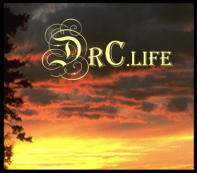
Monday 10 | 03| 2016
Describing the Mystic’s Path: Is That All There Is?
The first four blog entries contain a lifetime of experiences, research and writing aimed at describing the types of experiences associated with the life of a mystic. The work is a synthesis of this writer’s experiences with the published experiences of others (see the documents). There were side roads traveled in order to investigate a particular aspect of the experience, as exemplified by the Mystic Relationship. There were also pieces left unfinished, like the Resistant Relationship, because the social discourse did not fit the experiences and new dialog needed to be discovered. All of it represents a written description of entering the compassion space with another with the intent to promote well being, and includes information about that process not found elsewhere in the literature. But is that all there is? Here is where another side road was travelled. This writer has always had an artistic eye and some proclivity for photography. Searching for other ways to describe the path of the mystic resulted in a book of parables and poetry (The Compassionate Journey), and a 225-page graphic novel about the same topic – the journey of a mystic in today’s time, with a touch of science fiction (The Sons of Light Chronicles). There are ideas/concepts, which may be more clear to some readers using these different formats. These other formats also serve as an introduction to the basic ideas represented on this website, but is that all there is to describing the experiences of the mystic? There is no escaping it! The simple act of turning an experience into words or art, as in the graphic novel, is an action where something is always lost in translation. Chapter 2 in the Healing Relationship describes participants experiences with the shift to well being within the compassion space offered by the mystic (although that term is not used in that book). One of the consistent themes presented by the participants is expressed in two ways: first, there were no words to accurately represents the depth of the experience; and second, there was no common ground upon which to enter into discussion with others about the experience, even those very close to the participant. This observation of “something lost in translation” became one of the characteristics of the healing relationship. As this blog continues to explore ways to communicate this story about the path of the mystic there is no escaping that nagging question: is that all there is? Let’s look at an example – peeling and taking a bite of an orange: Image from internet It’s an experience many people in the modern world can relate to – the bright color, the sharp distinct smell of the orange oil as it sprays from the skin when we start to peel, that tingling of the glands in the back of our mouths before we take the first bite, and then the bite into a tangy, almost puckering, slice of orange where the juice surprisingly squirts and those bits of orange pulp fall apart in our mouths. Using the description, it is likely the reader of this blog can relate to this orange eating phenomenon. But is the reader’s recall of the experience the same as the writer describes it here? The answer to that is so obvious as to make the question seem ill conceived, but is it? We often share stories of our life with others, with loved ones, with the hope that they will hear us and maybe even meet us in some place of shared understanding. In social discourse we do not seek exactitude from others in their understanding, but rather a degree of fit. The more that the writer’s story fits with the experiences of the reader the more likely it is that the story will resonate with the reader and lead to reflection. Sharing the story of the path of the mystic will likely resonate more for some than for others. This is the nature of communication about the transformative experiences, including the compassion space. People will relate to the writings here in many different ways because they all have different ways of interpreting this writer’s descriptions. There is no exactitude in the story sharing, no perfect way of understanding the story. But this does not mean that the orange is not exist, nor does it mean that the story is false, nor does it mean that “I can never understand you". It simply means that there are boundaries on any media we choose to use for describing experience. When comparing the depth and range of experiences along the mystic path to the published accounts of mystic’s journey, one is often left asking, “Is that all there is?” Knowing this, we can accept the uncomfortability of “not knowing” as simply the nature of the process of observer – participant communication from the outsider’s point of view. But the mystic/healer has a way of standing both as observer and as participant, with both the outsider view and the insider view. .








Seeking the Soul of Life
























